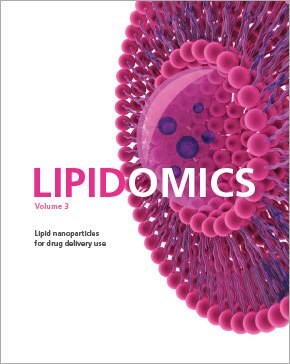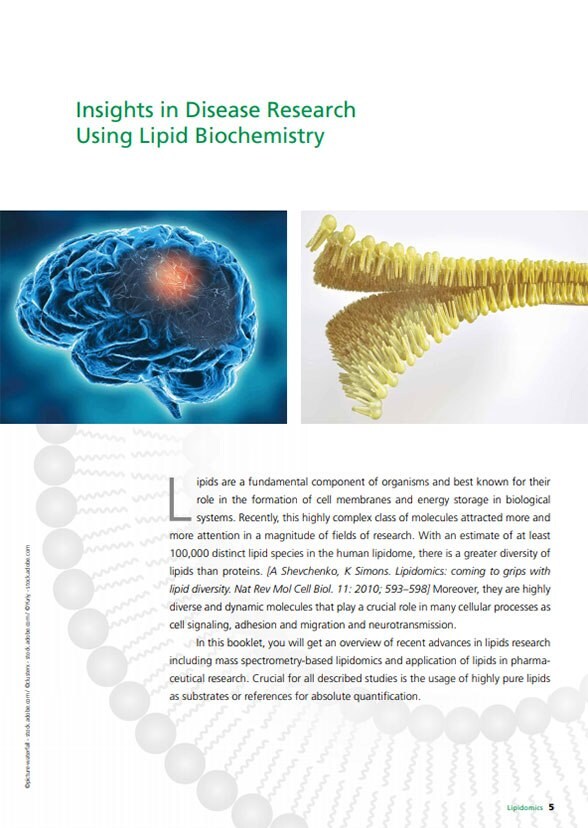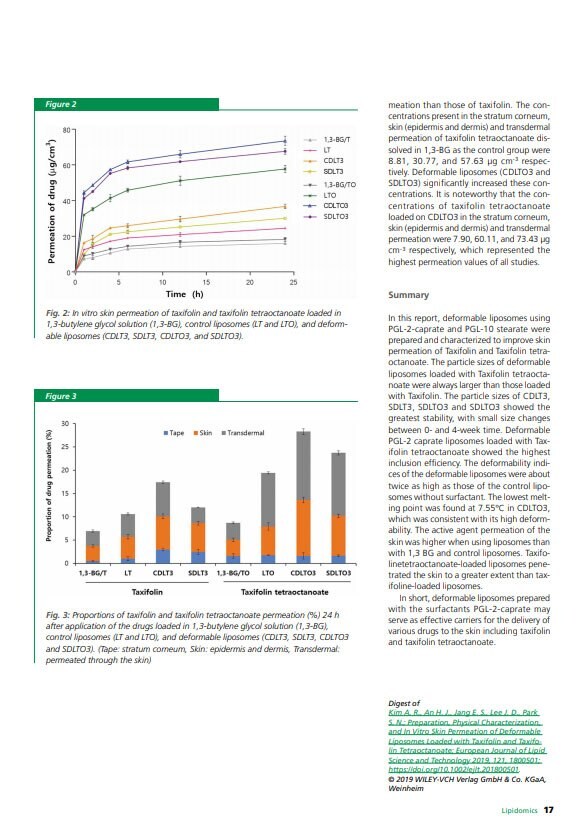Lipidomics Magazine Volume 2
Leading Research From Wiley
- Lipids Journal (AOCS)
- Advanced Science
- Advanced Materials
- Advanced Functional Materials
- Journal of Lipid Science and Technology
Cancer is a disease that affects millions of people every year. Lipidomics research is advancing cancer research, treatments and immunotherapy approaches. Alterations of cellular signaling pathways and regulating mechanisms have been associated with cancer development. Precisely detecting variations in physio-pathological conditions in cells is essential to provide effective and personalized cancer-targeting therapies.
Cell membranes are ideal biomimetic nanocarriers for anticancer drugs. Moreover, the host immune system can be activated to efficiently kill cancer cells. Smart nanomaterials can be designed to achieve simultaneous cancer radiosensitization and precise antiangiogenesis by encapsulating nanoparticles with cell membranes. In this edition, He et al. demonstrate how red blood cell (RBC) MoSe2-potentiated photothermal therapy (PTT) prevented macrophage phagocytosis to achieve in vivo anti-tumor efficacy.
An NIR-triggered antigen-capturing nanoplatform was designed and synthesized by Wang et al., using UCNP as a carrier, indocyanine green (ICG) as a light absorber, rose bengal (RB) as a photosensitizer, and a lipid molecule (DSPE-PEG-mal) as an antigen-capturing agent, for synergistic photo-immunotherapy for the treatment of metastasis cancer.
Sakasegawa et al. explain how a novel phospholipase D, LyPls-PLD, can exclusively synthesize cLyPA from Lyso-PAF, using a one-step enzymatic reaction without an organic solvent, to promote normal cell differentiation, hyaluronic acid synthesis, antiproliferative activity in fibroblasts, and inhibitory activity toward cancer cell invasion and metastasis.
Pinault et al. introduce the simple and cost-effective 1D high-performance thin layer chromatography (HPTLC) method validated to quantify lipid extracts of whole tumor cells or hepatocyte-isolated mitochondria.
In their article, Yeom et al. show that incorporating d-chirality into nanosystems enhances their uptake by cancer cells and prolongs in vivo stability in circulation. This research reveals that chiral nanosystems may have the potential to provide a new level of control for drug delivery systems, tumor detection markers, biosensors, and other biomaterial-based devices.
This lipidomics research significantly contributes to advancing our understanding of human disease, leading to new drug targets and therapies.
Content Overview
Page 5
Editorial
Page 7
Leaving the Wild West Era of Lipidomics
Interview with Dr. Kim Ekroos, Founder and CEO of Lipidomics Consulting Ltd.
Page 10
The importance of lipid biochemistry and bioanalytics in biomedicine and industrial application
Page 11
NIR-Triggered Phototherapy and Immunotherapy via an Antigen-Capturing Nanoplatform for Metastatic Cancer Treatment
Wang M., Song J., Zhou F., et al.
Page 16
The Fifth WS/DGAT Enzyme of the Bacterium Marinobacter aquaeolei VT8
Vollheyde K., Yu D., Hornung, E., et al.
Page 20
Designing Bioinspired 2D MoSe2 Nanosheet for Efficient Photothermal-Triggered Cancer Immunotherapy with Reprogramming Tumor-Associated Macrophages
He L., Nie T., Xia X., et al.
Page 27
A 1D High Performance Thin Layer Chromatography Method Validated to Quantify Phospholipids Including Cardiolipin and Monolysocardiolipin from Biological Samples
Pinault M., Guimaraes C., Dumas J.-F., et al.
Page 33
Chiral Supraparticles for Controllable Nanomedicine
Yeom J., Guimaraes P.P.G., Ahn H. M., et al.
Download Free Lipidomics eBook
Fields indicated by an * are required.
To continue reading please sign in or create an account.
Don't Have An Account?

